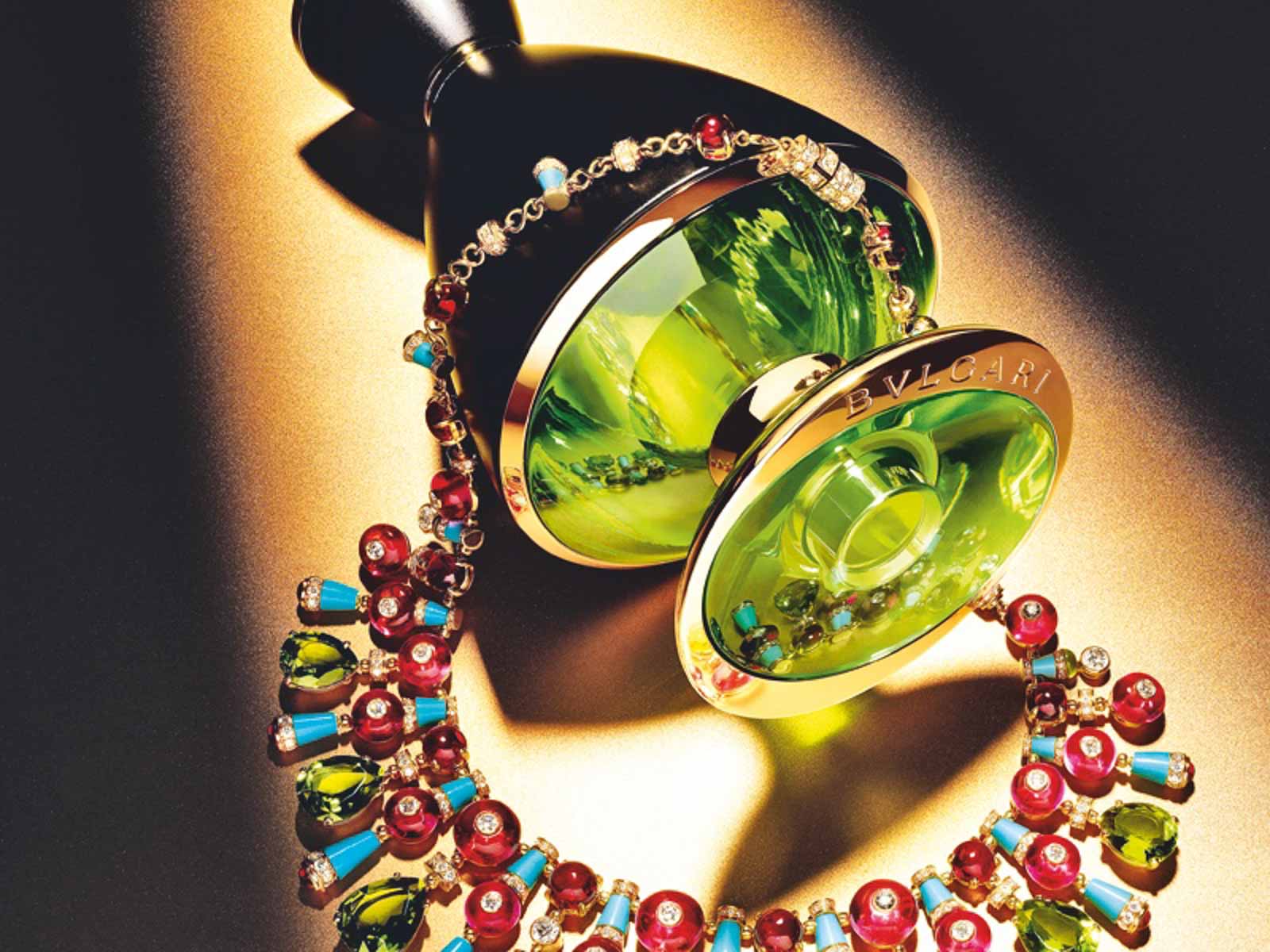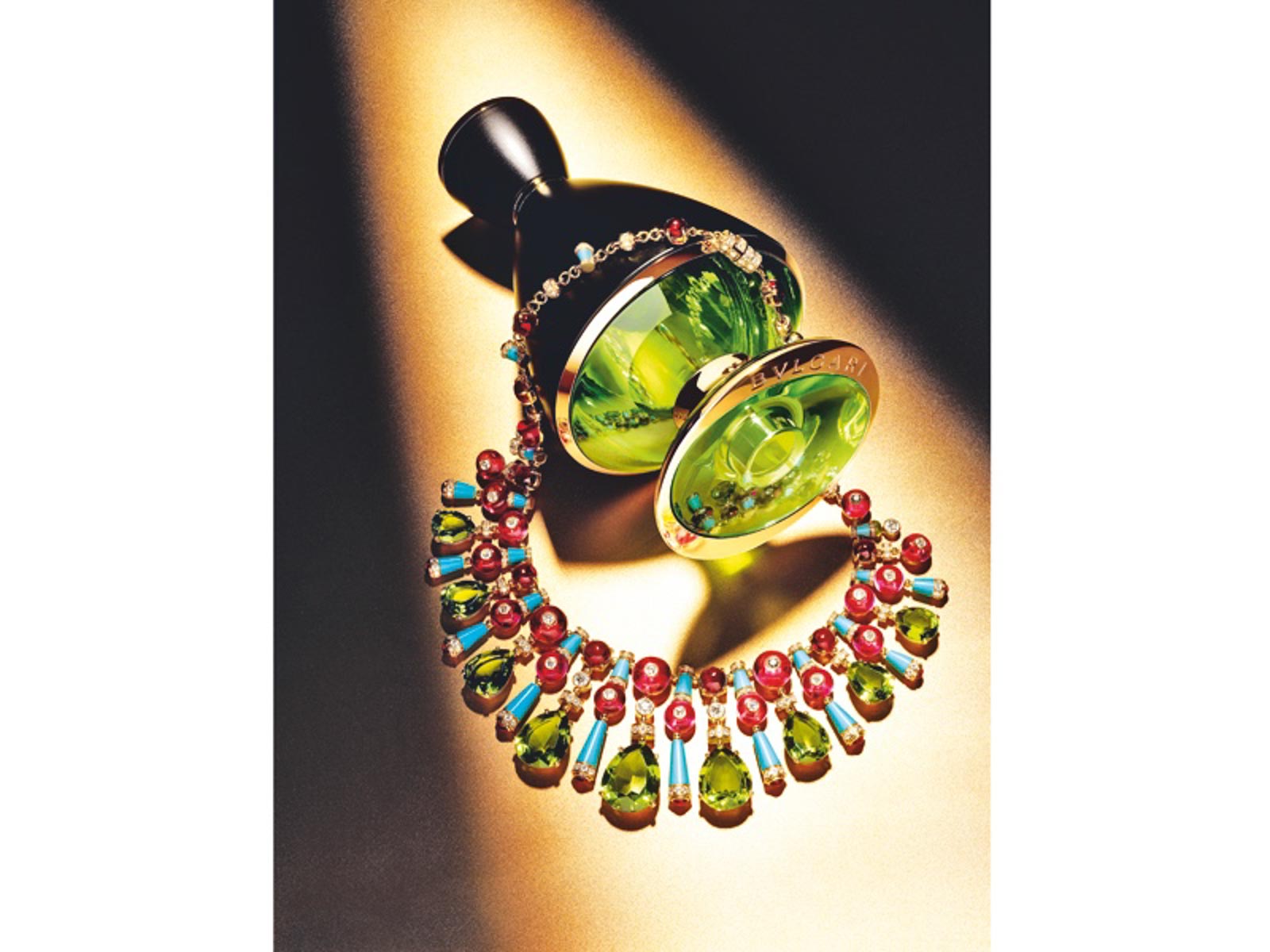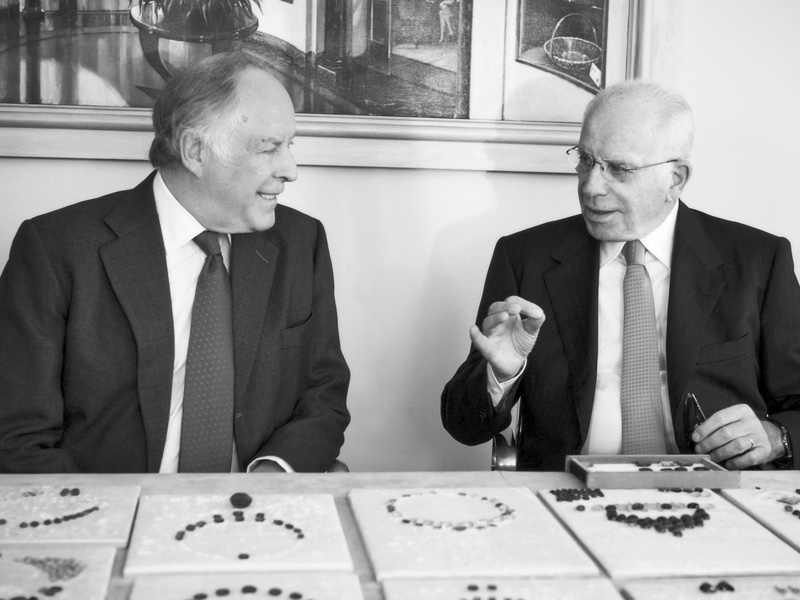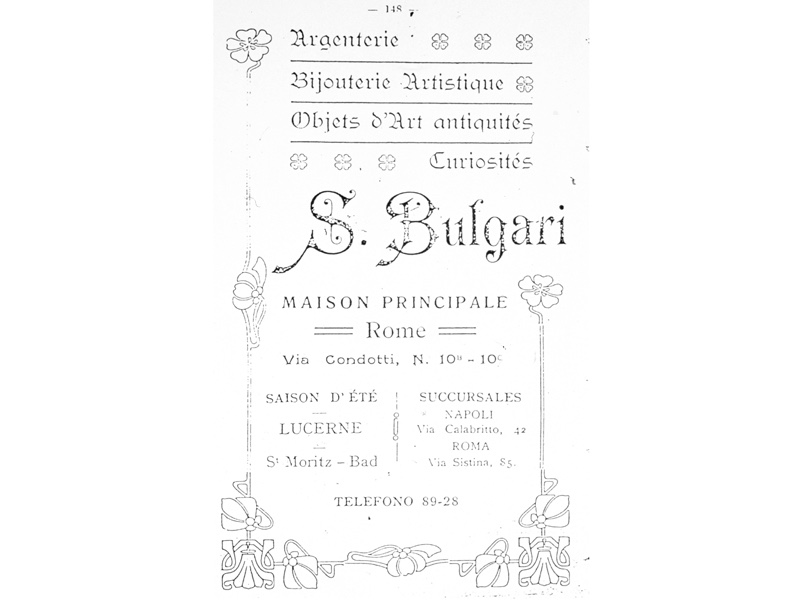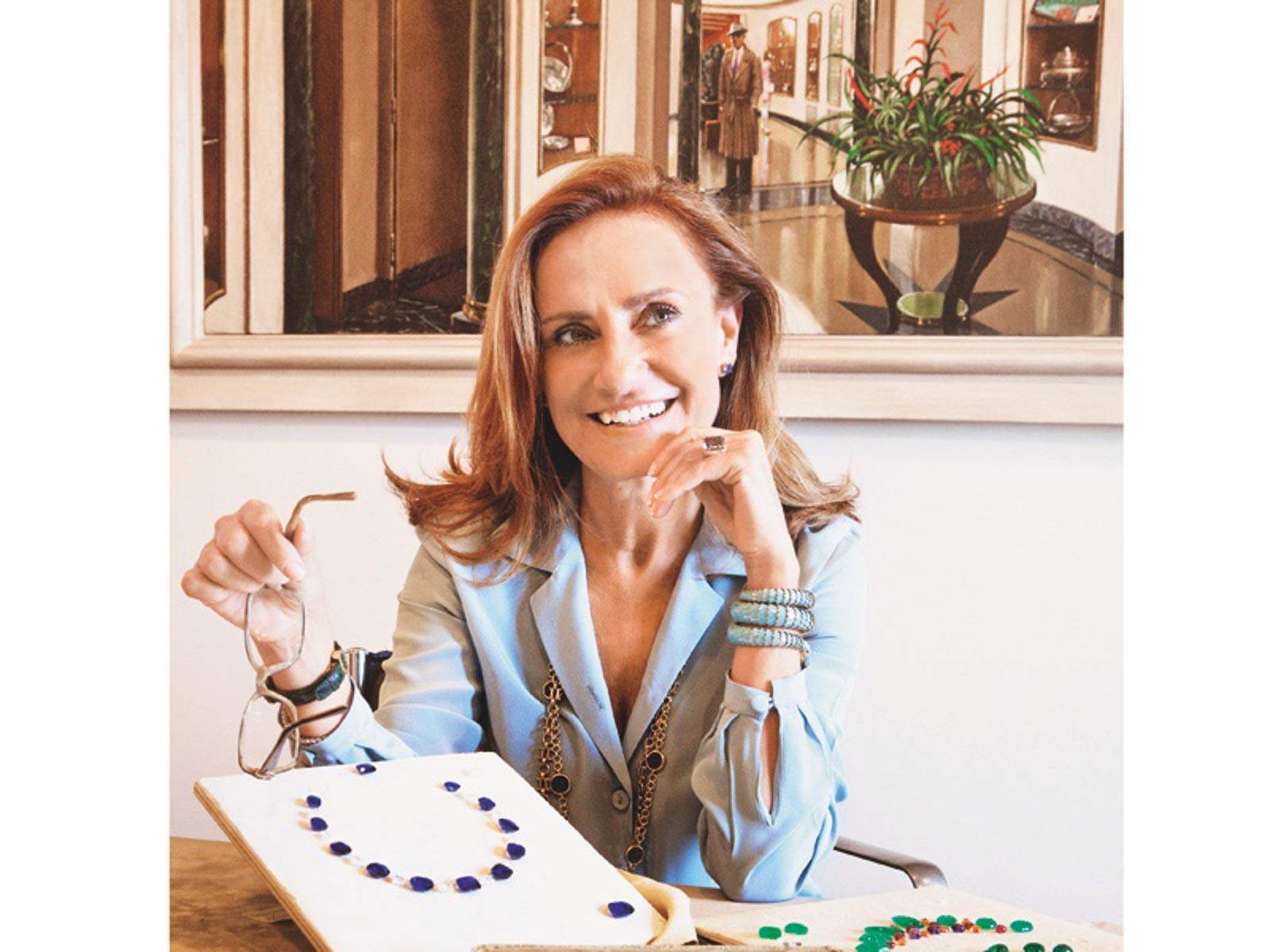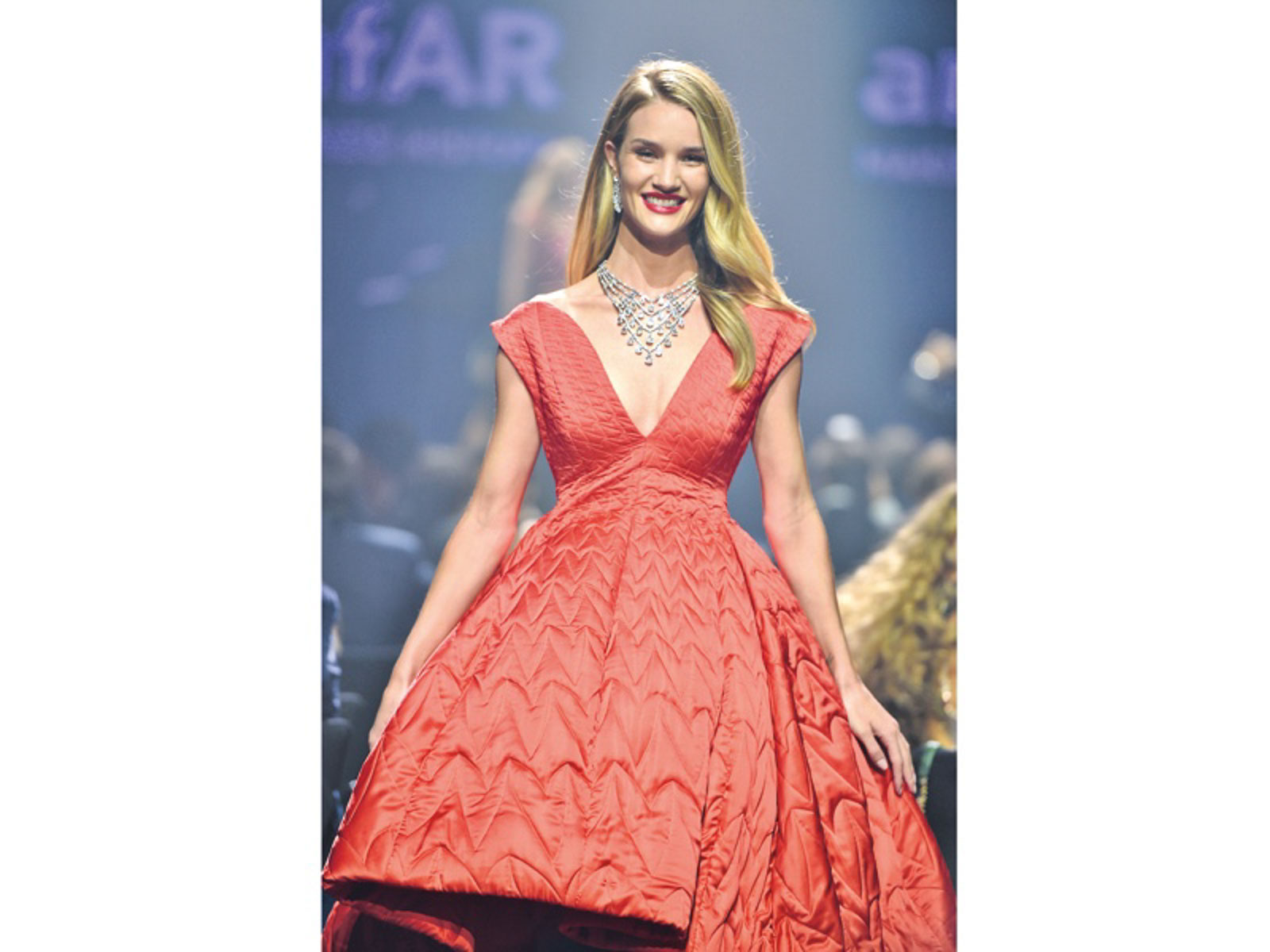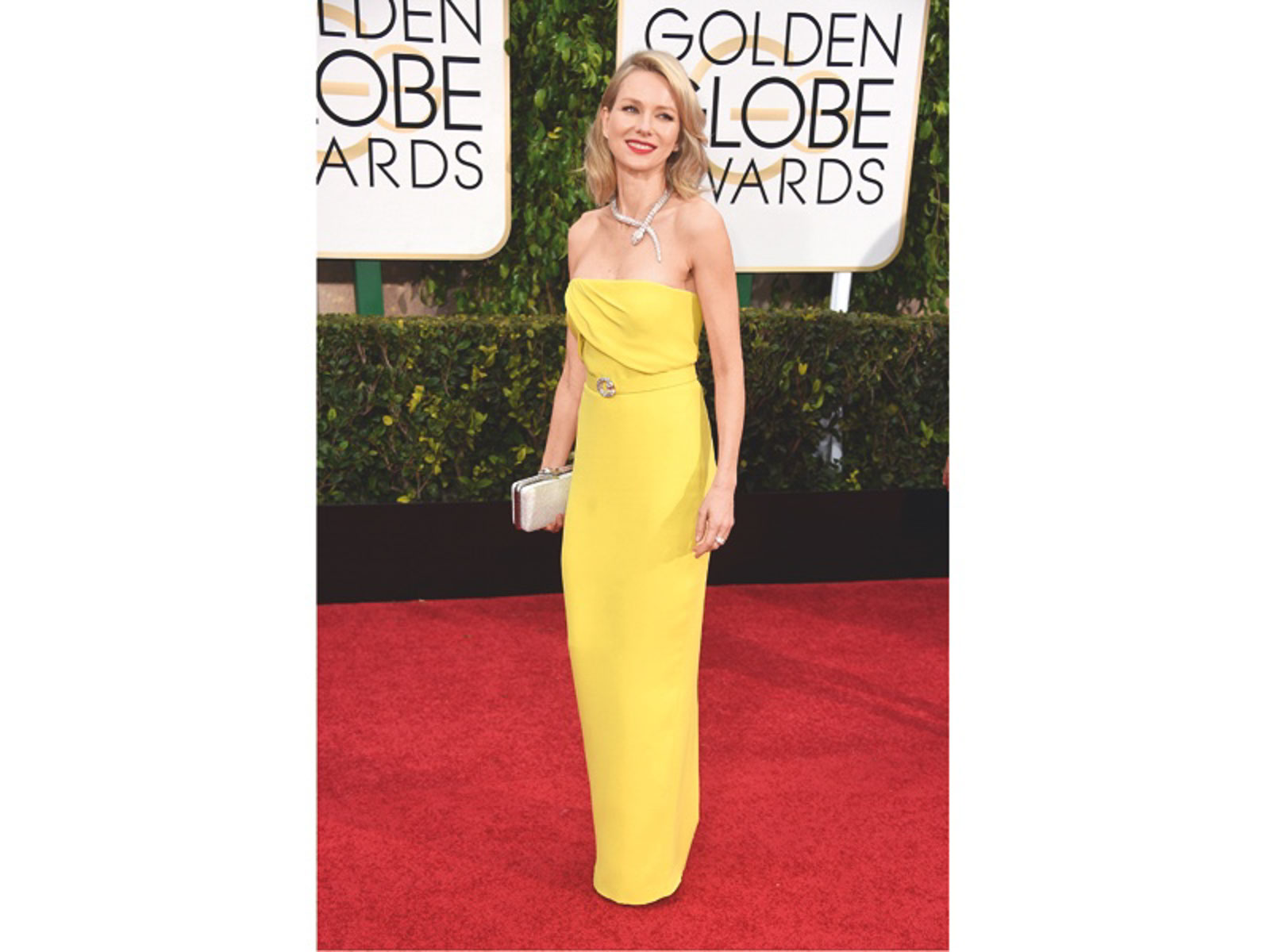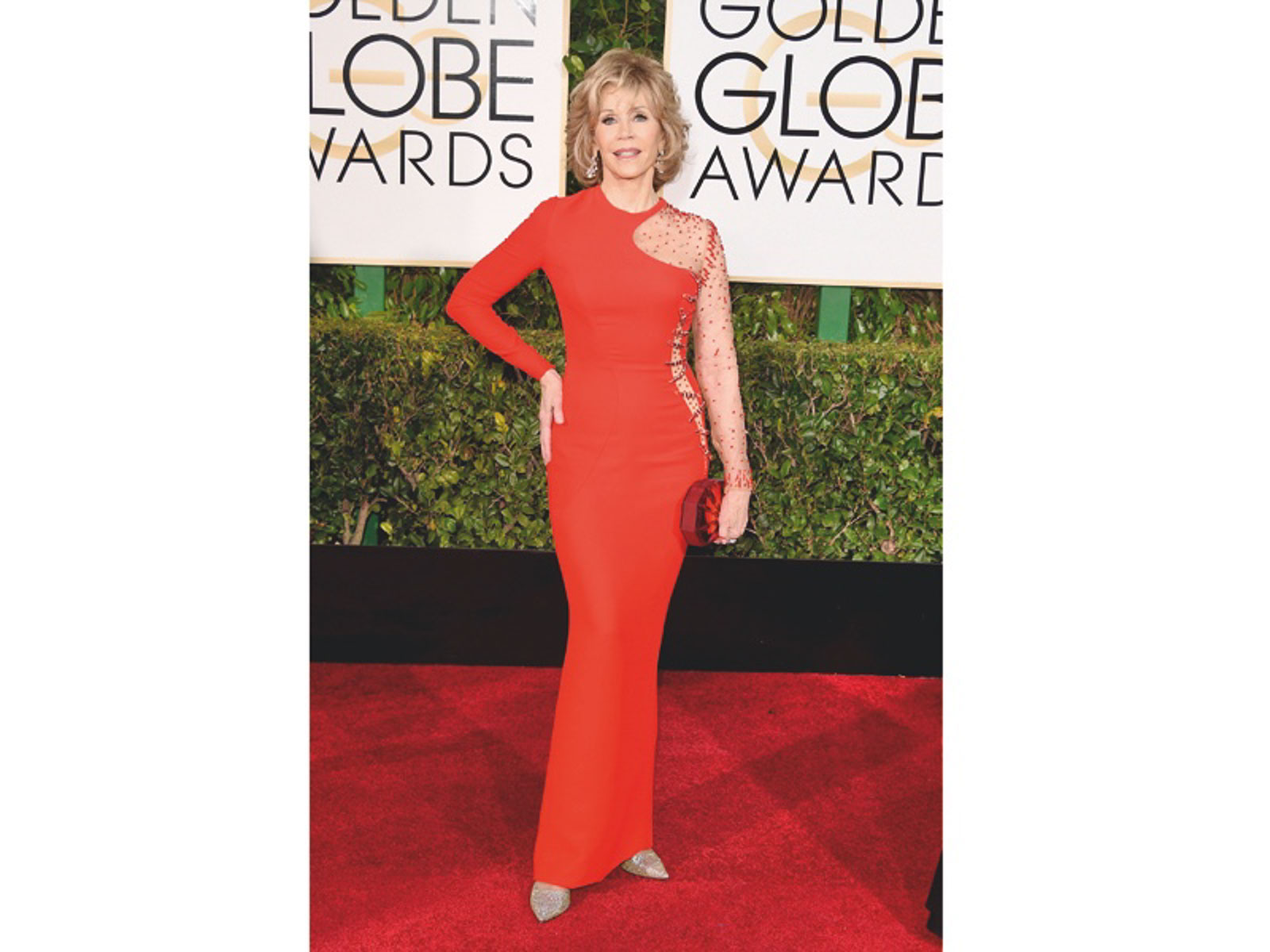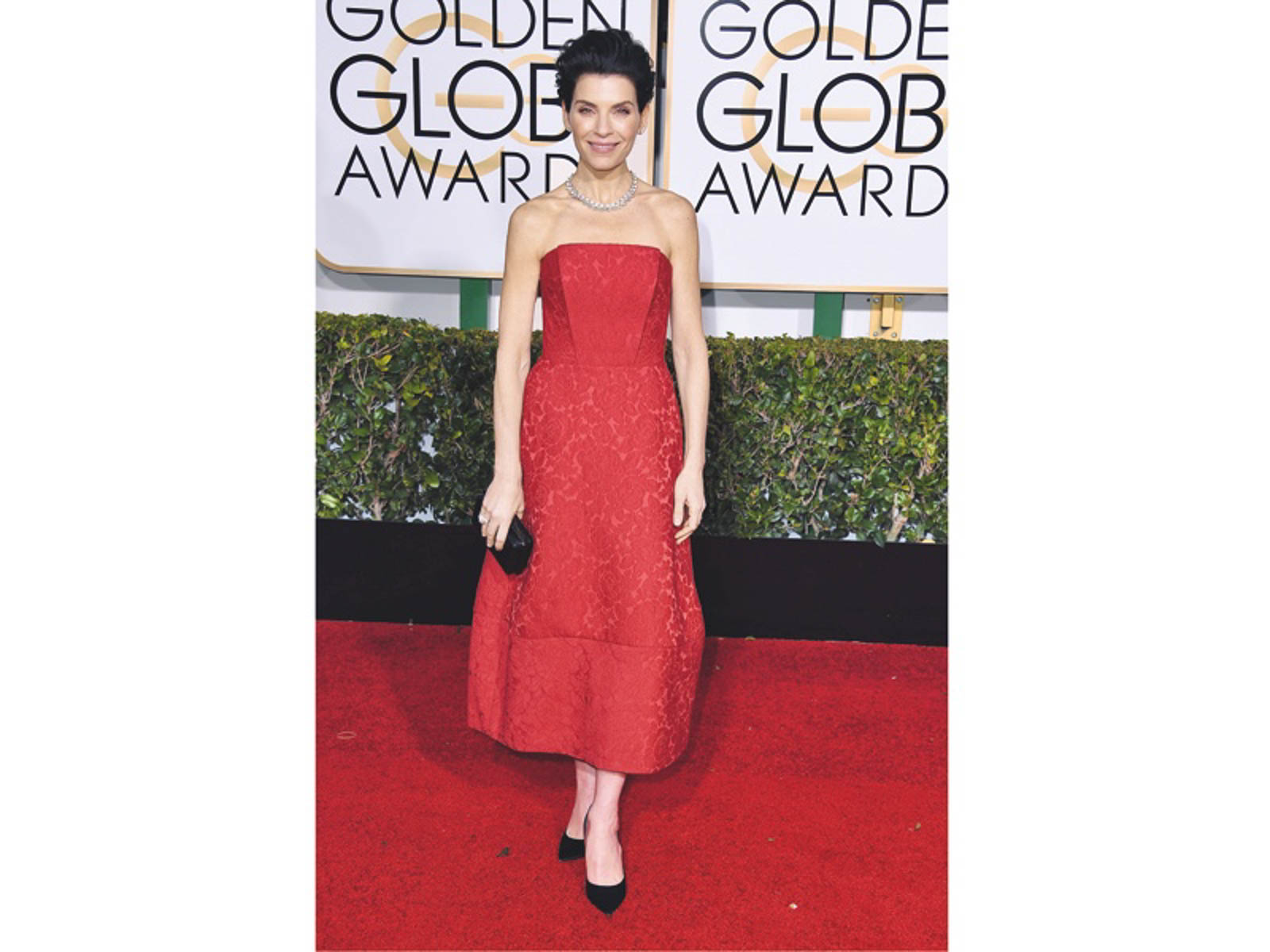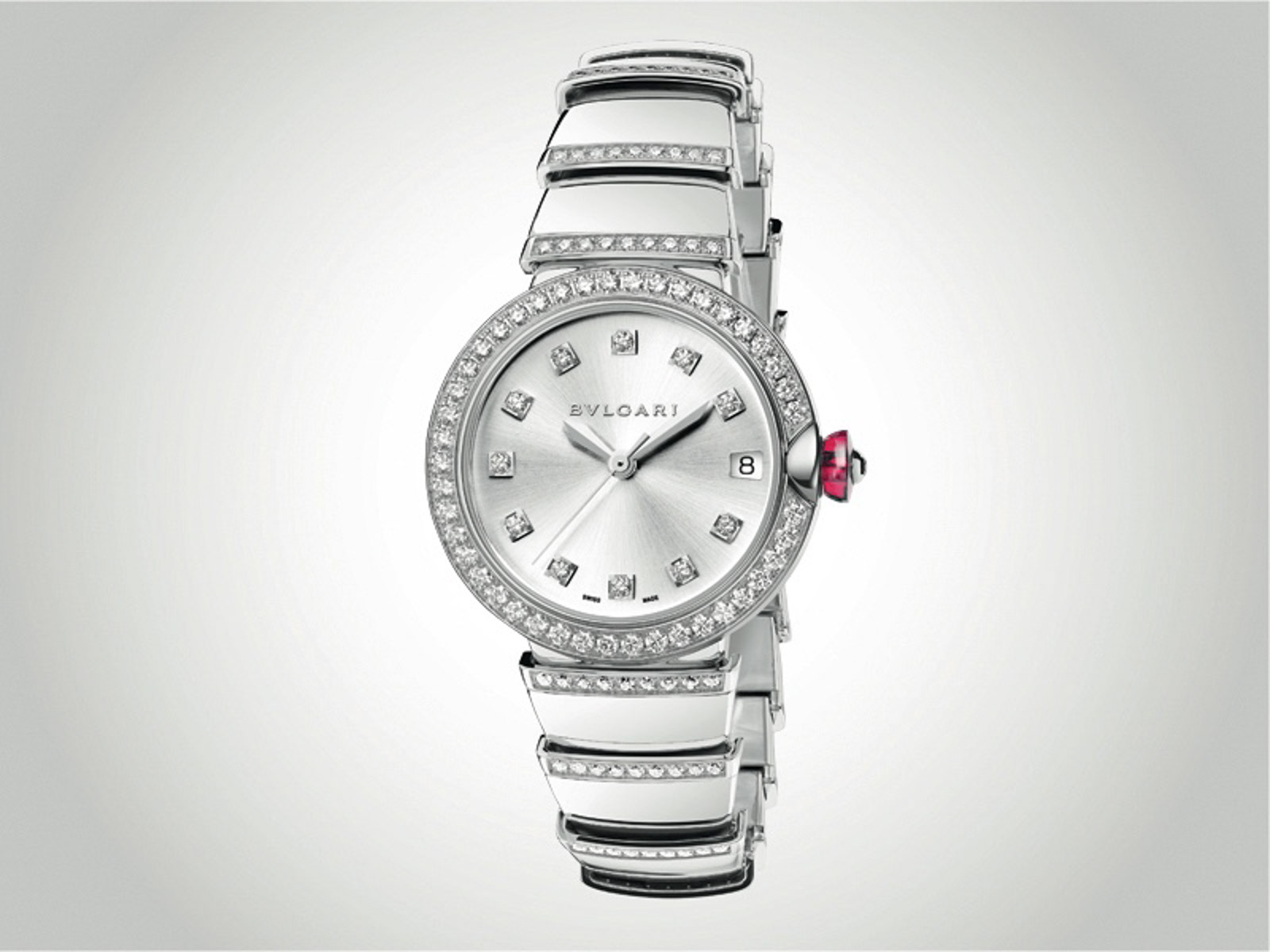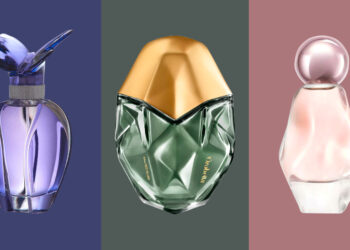Bulgari is one of the most powerful luxury houses in the world. The story of his rise to fame is a tale of passion and vision, which began in Rome in 1884 in a very unspectacular way. Starting with jewelry, Bulgari now also produces watches, bags and perfumes. And with a success that’s going through the roof.
They still exist, these traditional houses in family hands, handed down from one generation to the next. Bulgari is one such company that cultivates its heritage with love. After all, it is a beautiful story about the rise of the once penniless Sotirio Bulgari, who left his Greek homeland in 1881 and fulfilled a lifelong dream by opening a store in Naples. Not long before it is robbed and everything that was once so wonderfully in place is destroyed – life is not always fair. Now it’s time to show courage, pick yourself up again and carry on. Sotirio Bulgari’s next destination: Rome. He finds a new home in Via Sistina and starts a new business. The work is hard: Bulgari starts every morning at 5 a.m. to melt down, cast and reshape silver – his passion. Medallions or belt buckles are created with a love of detail, inspired by Greek, Byzantine or Islamic elements and combined with figures from mythology. His success takes Bulgari’s breath away and his second business soon follows, later even the third. And so we continue to climb the ladder. When Sotirio died in 1932, his two sons Giorgio and Costantino took over. One of the first actions: changing the name to BVLGARI – block letters in combination with the Roman five. In 1940, Bulgari launched watches on the market for the first time, in addition to the jewelry that was already known far beyond its borders. And the success story is gathering pace.
La Dolce Vita
In the fifties, Rome becomes the center of the international jet set. Film stars populate the “Hollywood on the Tiber”, including Liz Taylor, Richard Burton, Audrey Hepburn and Tyrone Power. And they want one thing: as much bling-bling as possible. Hepburn presents her mother with Bulgari jewelry, for example, while Tyrone Power and Linda Christian choose their wedding rings here. Bulgari outfits the ladies and gentlemen, who in turn carry the traditional label out into the world. The style changes subtly: the necklaces become more opulent, color and gemstones are played with and in 1960 antique coins are integrated for the first time as a tribute to the Roman origins. Bulgari is unstoppable and soon opens its first stores in New York, Geneva, Monte Carlo and Paris. The world needs jewelry – and Bulgari is busy designing. Egyptian and Indian influences characterize the label until a new idea is added in the mid-70s: the concept of wearability. Bulgari set itself the goal of creating jewelry that could be worn from morning to night, on the red carpet or strolling in the sun. She is increasingly crystallizing into the typical Bulgari woman, a dynamic, multi-faceted, elegant person. Lucia Silvestri, Bulgari’s Creative Director since 1988, explains her vision: “The Bulgari woman has charisma and bubbles over with joie de vivre. Playful, glamorous and unique – she embodies the living form of the perfect gemstone.” In 1977, the company set another milestone with its first men’s watch. For the first time, the logo itself became a decorative element, making the “BVLGARI BVLGARI” a bestseller. Confirmed by its success, Bulgari founds its own watch company. And it does so in the one country that is known for its timepieces like no other: Switzerland.
New ways
In 1984, the next generation takes over the management of the company. Giorgio Bulgari’s sons, Paolo and Nicola, share the sceptre as President and Vice-President. The result: the “Parentesi”, a kind of prêt-à-porter jewelry collection, for which individual pieces are produced in large numbers and in various designs – from steel to gold to diamonds. Everyone should find their own favorite piece at Bulgari, their favorite material at the right price. And the label never tired of surprising in the 90s, combining precious stones with gold, integrating steel, ceramics and even silk into its collections. Having reached the top step in the jewelry sector, something new was needed in 1992. With Eau Parfumée, Cologne au Thé Vert, Bulgari launches its first fragrance on the market. Sparkling notes of lemon and mandarin mingle with bergamot and coriander and are combined with Bulgarian rose, jasmine and green tea. A fragrance for women and men that stands for everything that Bulgari stands for: well-being, luxury, comfort.
To the top
Bulgari is unstoppable. Shortly before the turn of the millennium, the first eyewear and leather accessories are launched on the market. In 1999, the label launches one of its absolute classics, the B.zero1 ring. A piece that, according to Creative Director Lucia Silvestri, belongs in every jewelry box: “This ring embodies Bulgari’s pioneering spirit and love of experimentation like no other piece. There are countless ways to wear it: completely made of gold, adorned with diamonds or in combination with ceramic. The integrated spiral, the trademark of the B.zero1, stands for our past, present and the future of Bulgari, the smooth transition from beginning to end – it is a symbol of eternal development.” Step by step, the Bulgari company, which once started out so small, is expanding. In 2004, the first Bulgari hotel was opened in Milan, followed two years later by the first resort in Bali. Since 2007, you can even eat at Bulgari or drink a ristretto in the café in Tokyo. It is unbelievable what the company, once founded in Naples, has achieved in 125 years. In 2009, it is time to celebrate this anniversary in style. With the retrospective “Between Eternity and History: 1884-2009”, an exhibition of important pieces from Bulgari’s heritage (provided by Elizabeth Taylor, one of the label’s earliest fans), which travels from Rome to Paris, Beijing and Shanghai. The highlight: Elizabeth Taylor’s engagement ring worth 20 million dollars. Full speed ahead: Bulgari joined forces with LVMH in 2011 and reopened its flagship store in Rome in 2014 in honor of its 130th birthday, completely redesigned by Peter Marino. Despite its expansion, the traditional house has not lost its charm. It is probably the way in which Bulgari carries its heritage, implements the visions of its founder Sotirios and constantly reinvents itself that accounts for its success. This glamor that surrounds the label, this aura of old and new, of tradition and modernity, remains. And continues to fascinate wearers of jewelry, accessories and perfumes in 2015.
Facts & Figures
– Bulgari has more than 300 stores.
– Around 4,000 people work for the traditional company, most of them in Italy.
– The company has been part of the LVMH Group since 2011. Jean-Christophe Babin has been the CEO since 2013.
Le Gemme – an olfactory journey
Since the launch of its first perfume in 1992, fragrances and jewelry have gone hand in hand at Bulgari. Bulgari Creative Director Lucia Silvestri explains: “The two components form a symphony that brings joy to the wearer. The best example is the new “Le Gemme” collection.” This comprises six fragrances inspired by the most important gemstones used at Bulgari. “When I hold such a stone in my hands, look at it, feel it and play around with it, it gives me the same power as when I smell a fragrance that I like,” adds Silvestri. And so “Le Gemme” crowns this symbiosis. The flacons for these haute perfumery fragrances were created by the Swiss design collective Atelier Oï, who were inspired by ancient amphorae in which travelers used to transport their treasures. In keeping with this inspiration, “Le Gemme” presents itself as a journey through Bulgari’s history, captured in six precious stones and olfactorically translated into six unique fragrances.
The eau de parfums from Bulgari’s “Le Gemme” collection are available per 100 ml at 350 francs each.
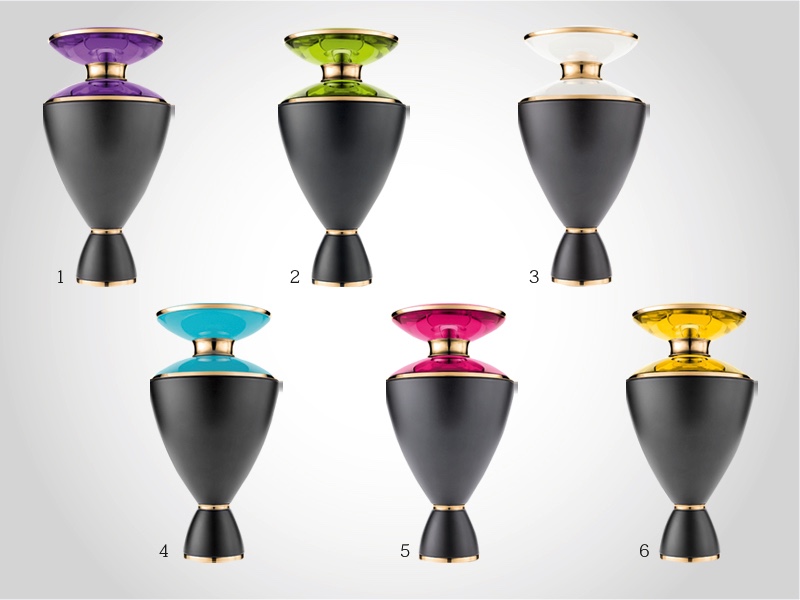
1 Ashlemah – the amethyst | orris root, lavender, violet
2 Lilaia – the peridot | peppermint, bitter orange, orange leaves
3 Calaluna – the moonstone | sandalwood, almond, ambrette
4 Noorah – the turquoise | cardamom, tobacco, oak, candied date
5 Amarena – the tourmaline | peony, violet, pomegranate, cherry
6 Maravilla – the citrine | citrus note, peach, jasmine, patchouli


